The skeleton had a stake driven through its leg and a small rock in its mouth, both common features of ancient vampire burials.
EXPERTS claim that this skeleton is proof that vampires walked among us, years after they dug up a collection of bones bearing all the hallmarks of a blood-sucker burial.

The skeleton, discovered in a grave near a church, was uncovered two years ago, and is now set to be showcased as part of a vampire exhibition.
The skeleton was uncovered in a graveyard in a town in northern Poland, where it will go on exhibition at a local museum
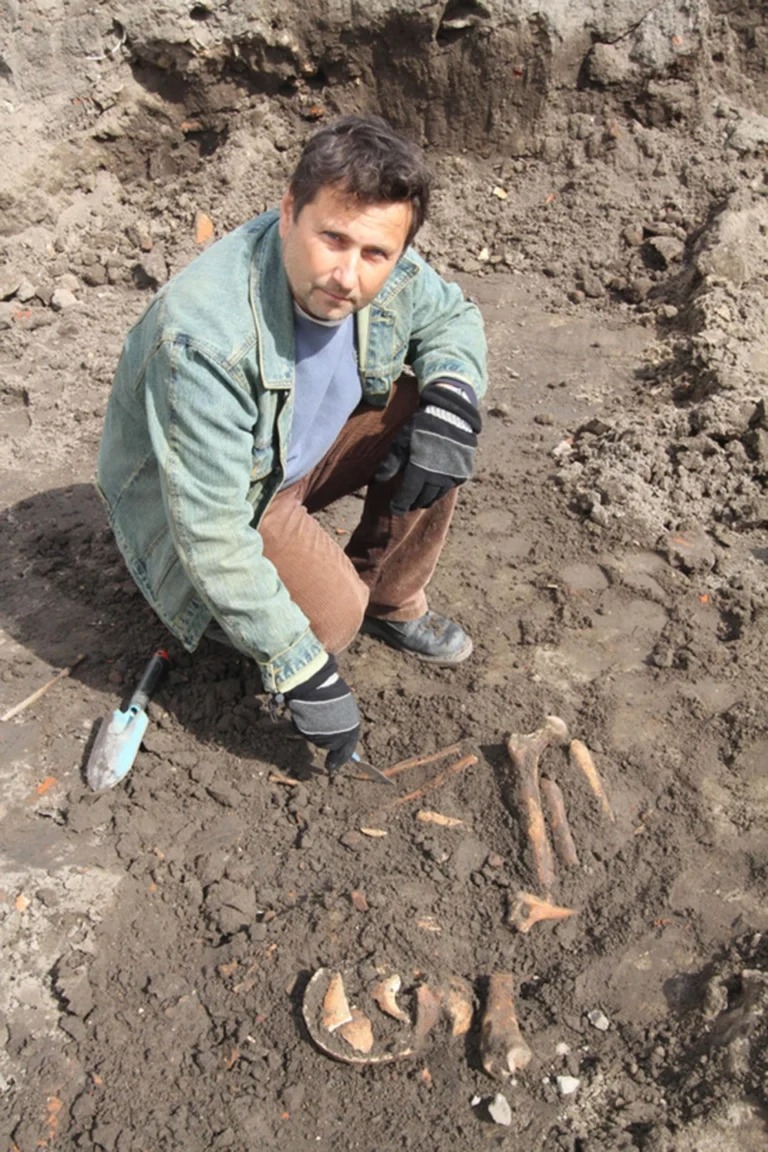
The discovery was made two years ago, but the bones are now due to go on display for the first time
Dig leader Slawomir Gorka said the man, who was found buried in an ancient Polish cemetery, had probably been laid to rest in the 16th century.
Buried in the town of Kamien Pomorski, everything about the skeleton points to a vampire burial – right down to the macabre details.
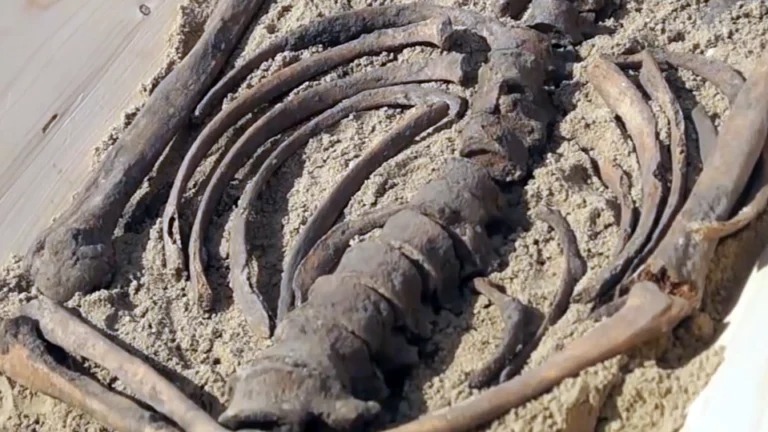
The skeletal remains featured bones with holes in, where stakes had been driven through the corpse’s limbs
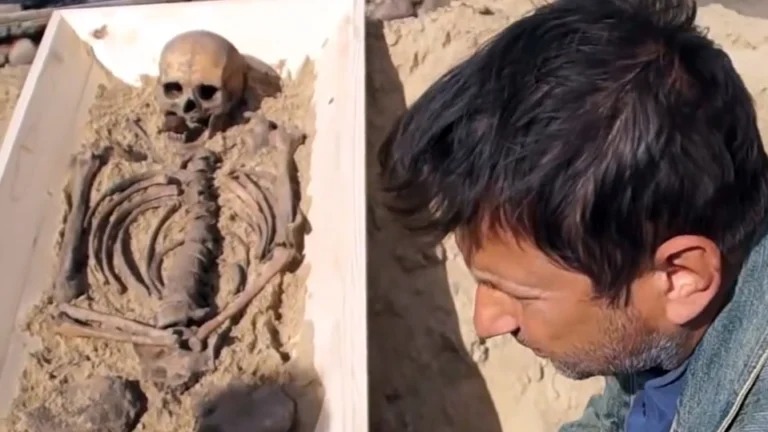
The skeleton bears all the hallmarks of a historic vampire burial, from the jaw to the limbs
The skeleton had a stake driven through its leg and a small rock in its mouth, both common features of ancient vampire burials.
People accused of being vampires would be buried with iron stakes pinning their limbs to the earth so that they wouldn’t be able to climb out of their graves.
And the stone in the vampire’s mouth would have been placed there to prevent the creature from biting or sucking blood from its unlucky victims.
The bones are now on display at the Kamien Museum of Land History, in northern Poland, where organisers want to put together an exclusive exhibit just for the vampire.
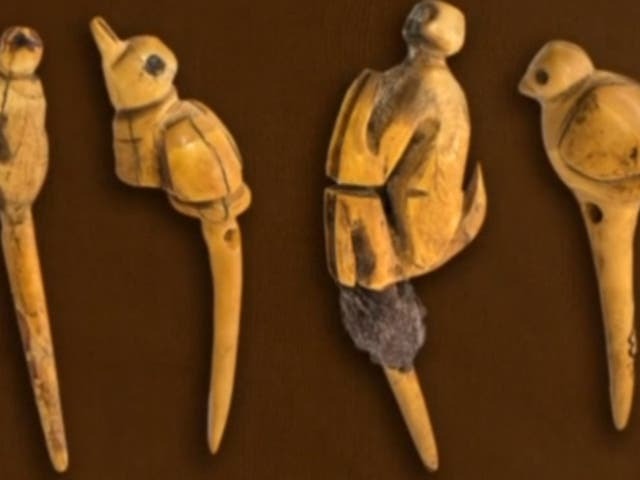
The accused vampire was buried with a rock in his mouth, probably to prevent him from biting anyone before he died
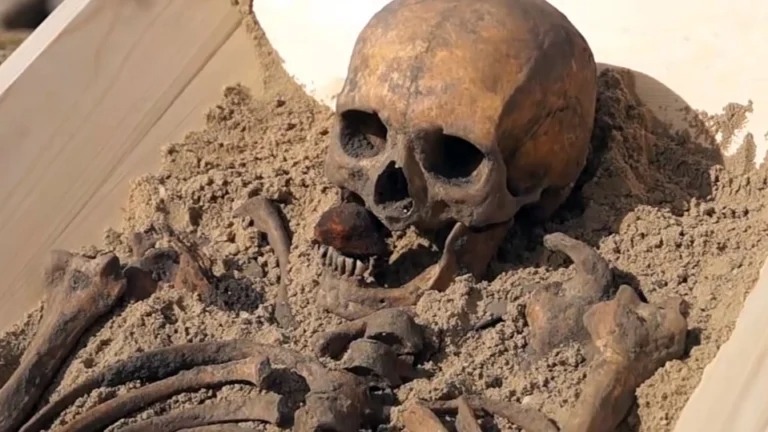
The skull is a chilling reminder of the very-real historical panic people once had about these mythical monsters
Many ancient civilisations lived in fear of vampires, and believed the creatures were real.
Vampire burials like this one were relatively common in medieval Europe, where anyone accused of vampirism would face the prospect of a grisly death at the hands of stake-wielding villagers.
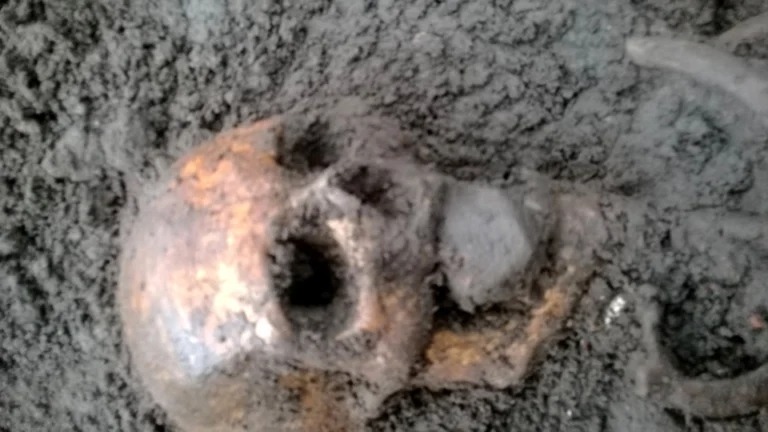
A team of Polish researchers uncovered the remains, which will be showcased as part of an exclusive exhibition
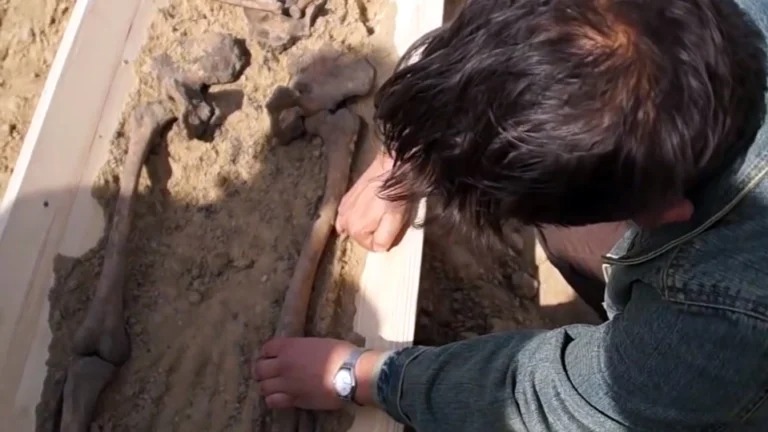
Bones had clear holes in them where iron stakes had been driven into the corpse to pin it down
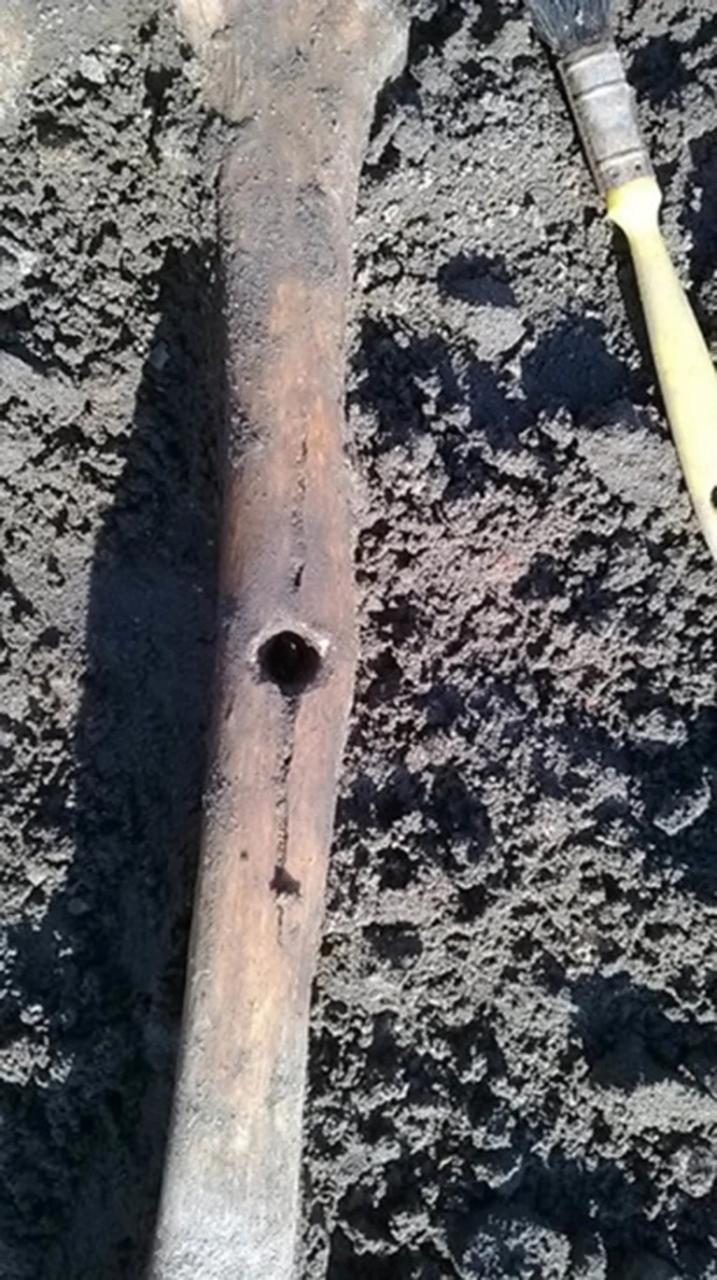
Historians believe that this hysteria could have been caused by outbreaks of ᴅᴇᴀᴅly diseases such as tuberculosis.
The contagion would sweep through entire villages, killing people as they slept whilst survivors were left with bleeding mouths as a symptom of the disease.
This saw some survivors accused of causing the deaths – and their bloodied mouths meant blame was heaped on them.





